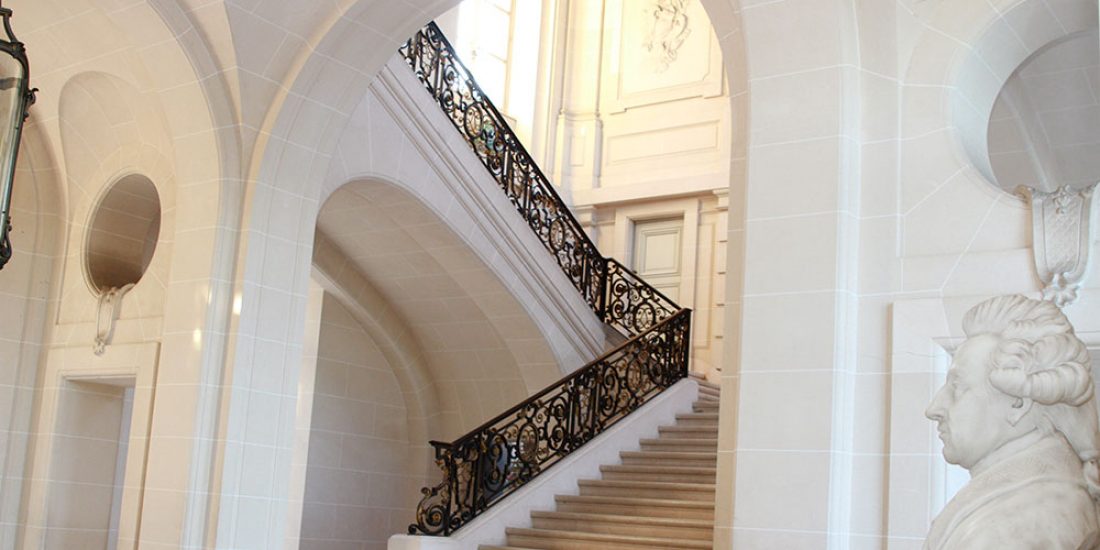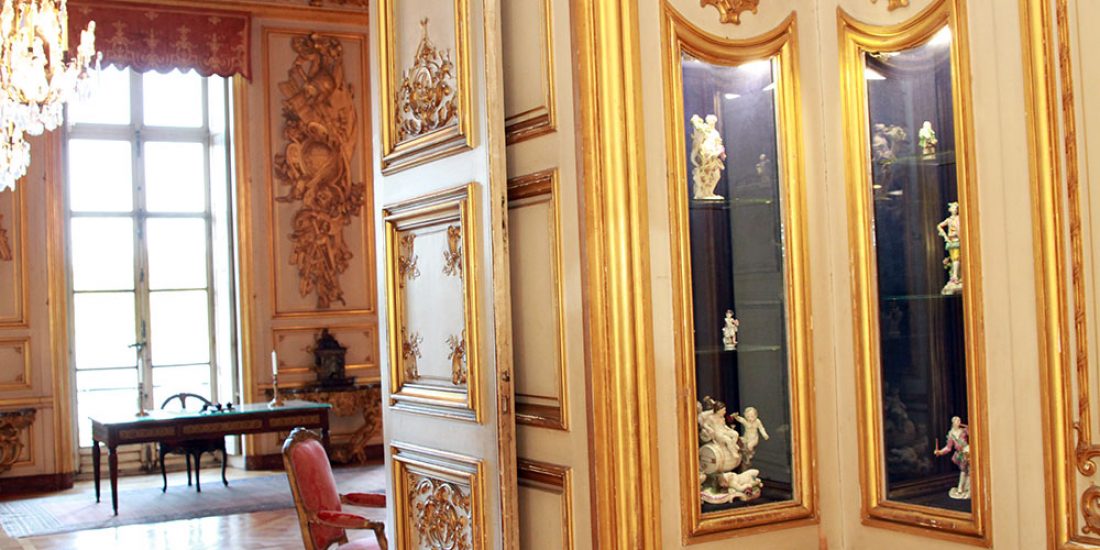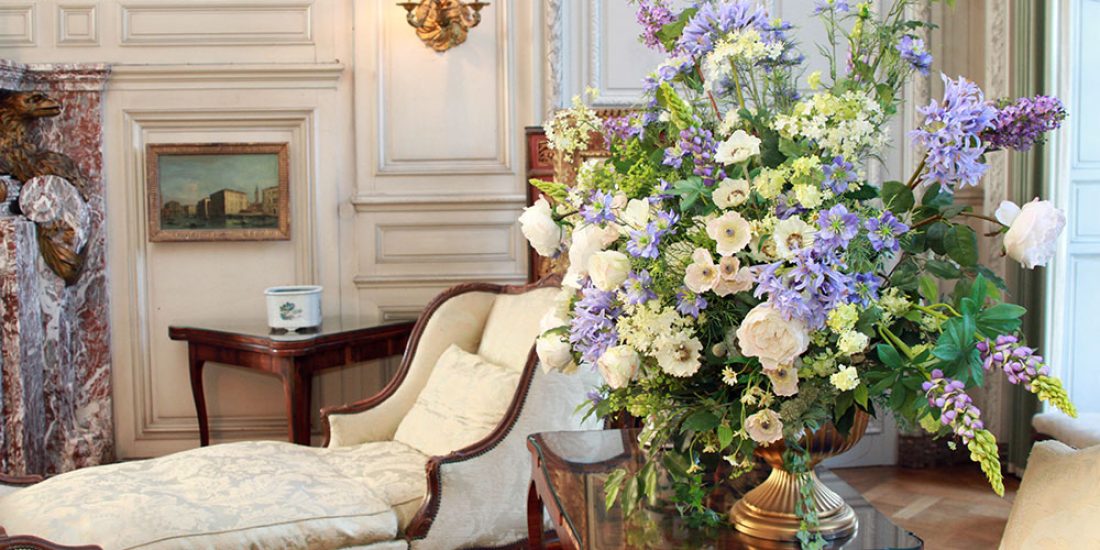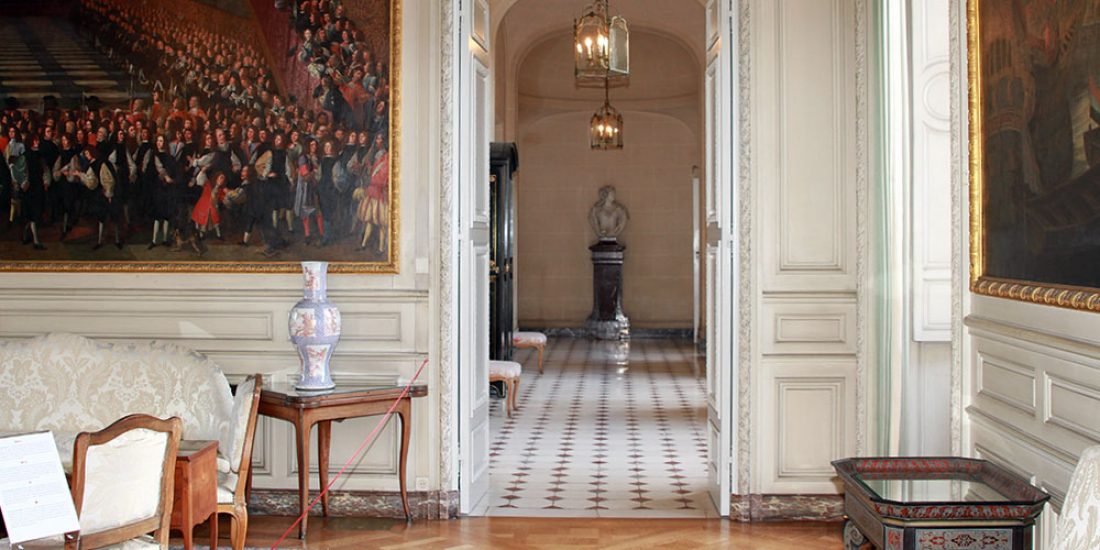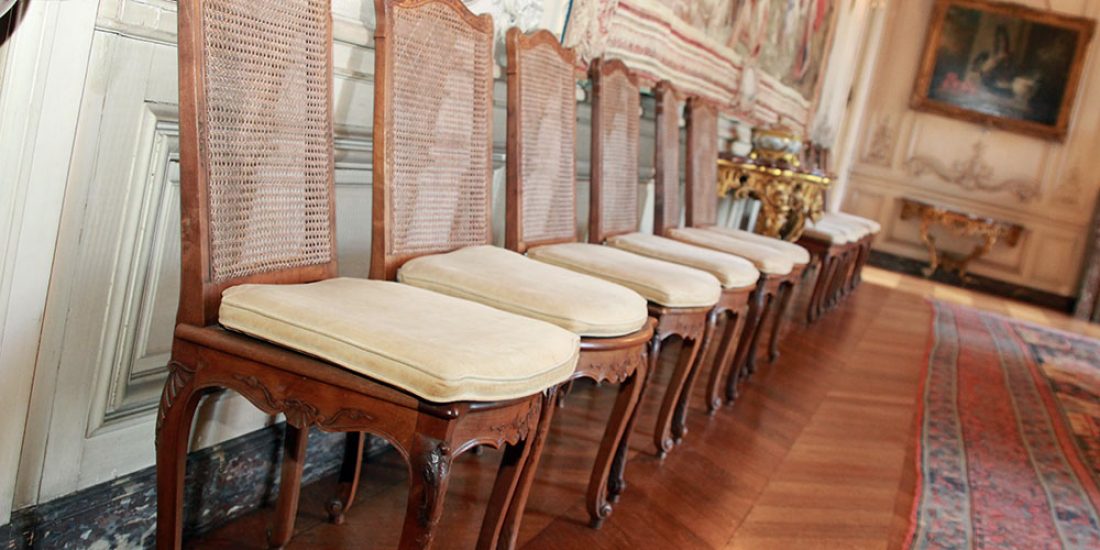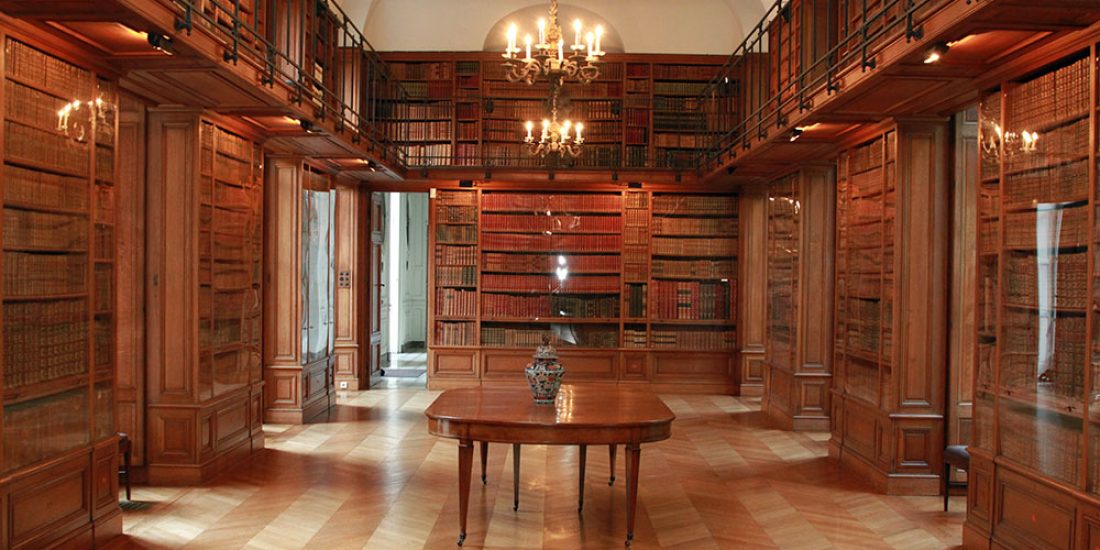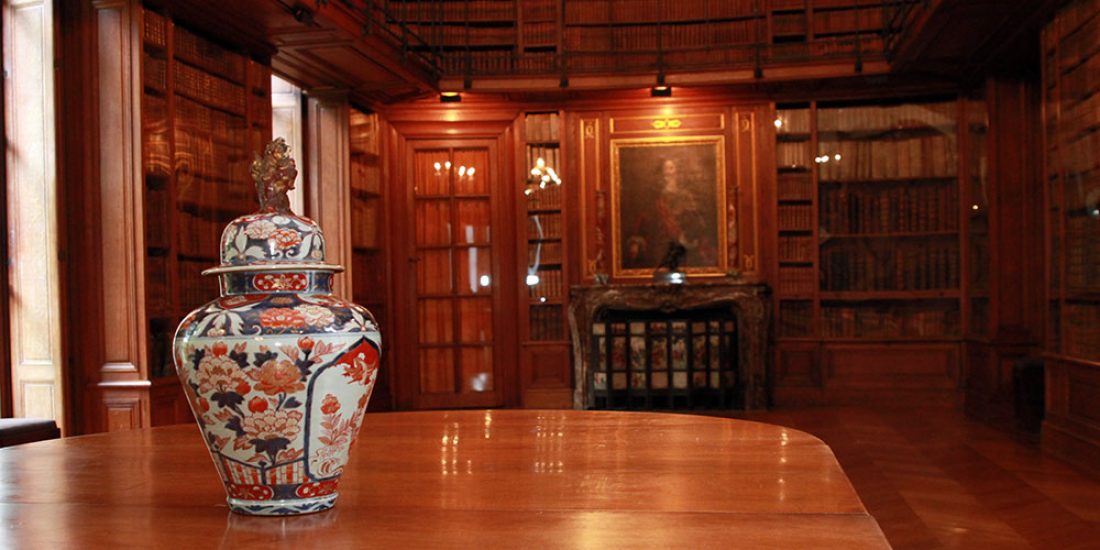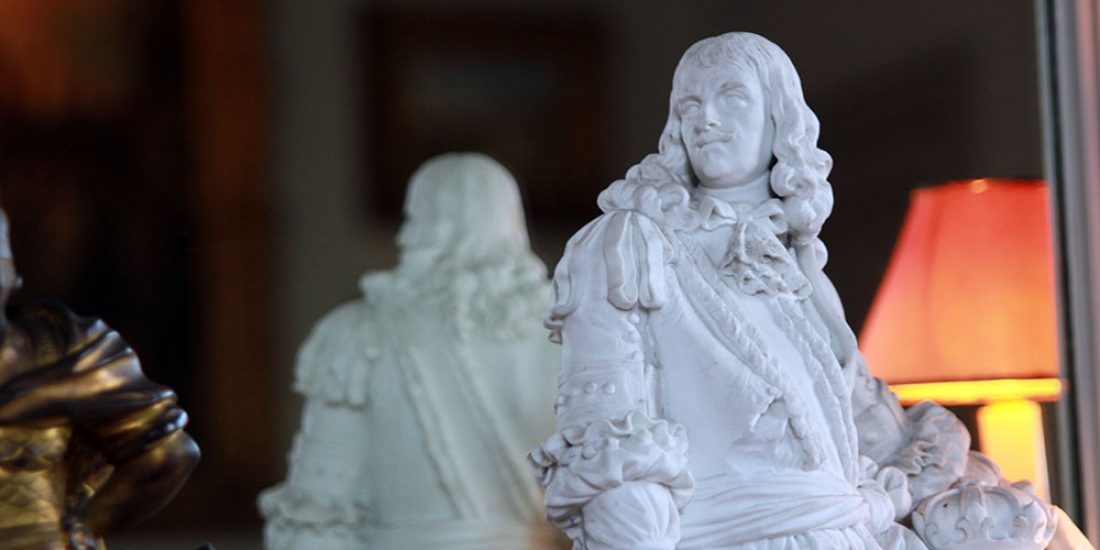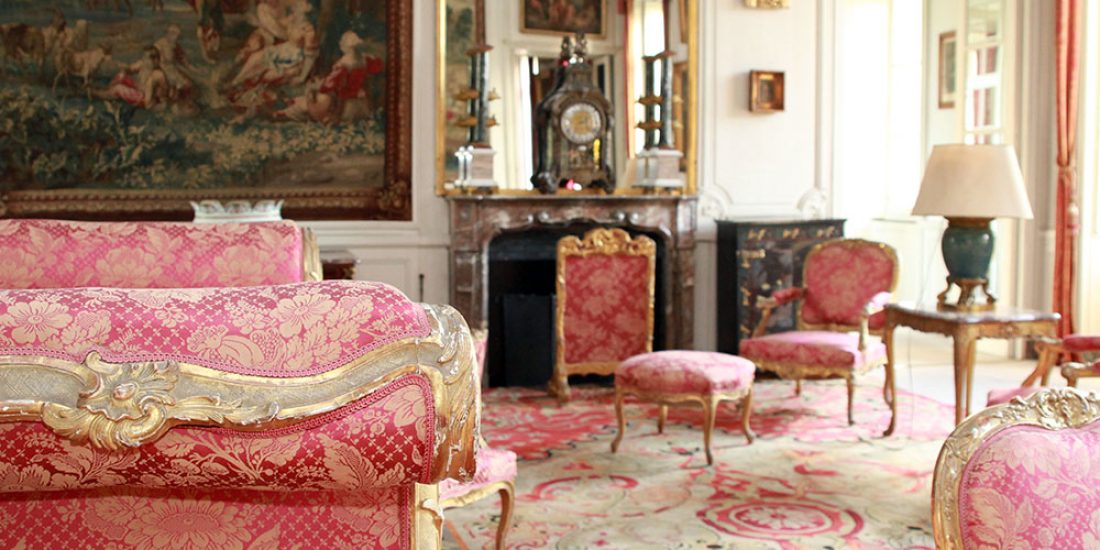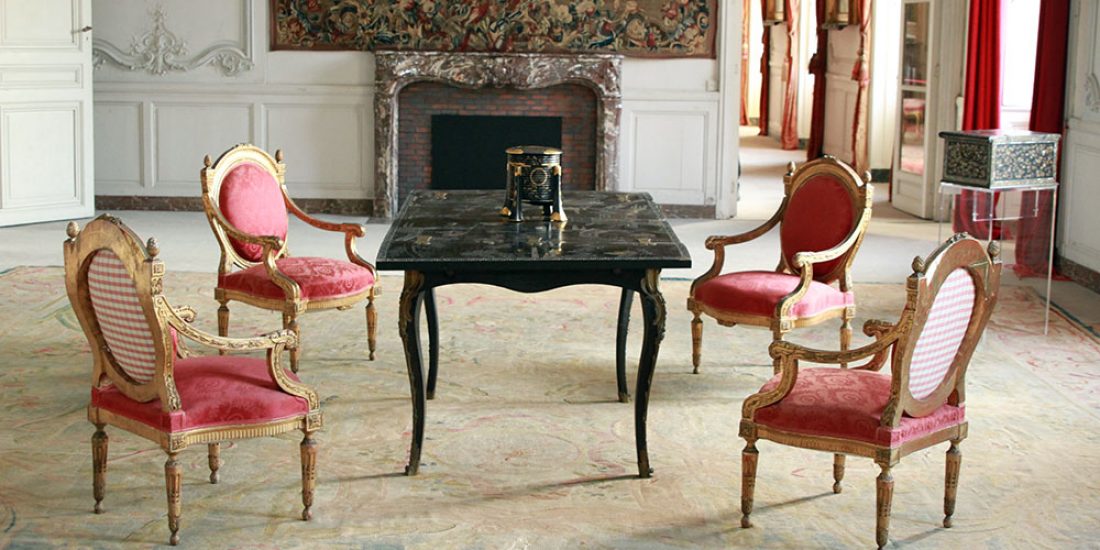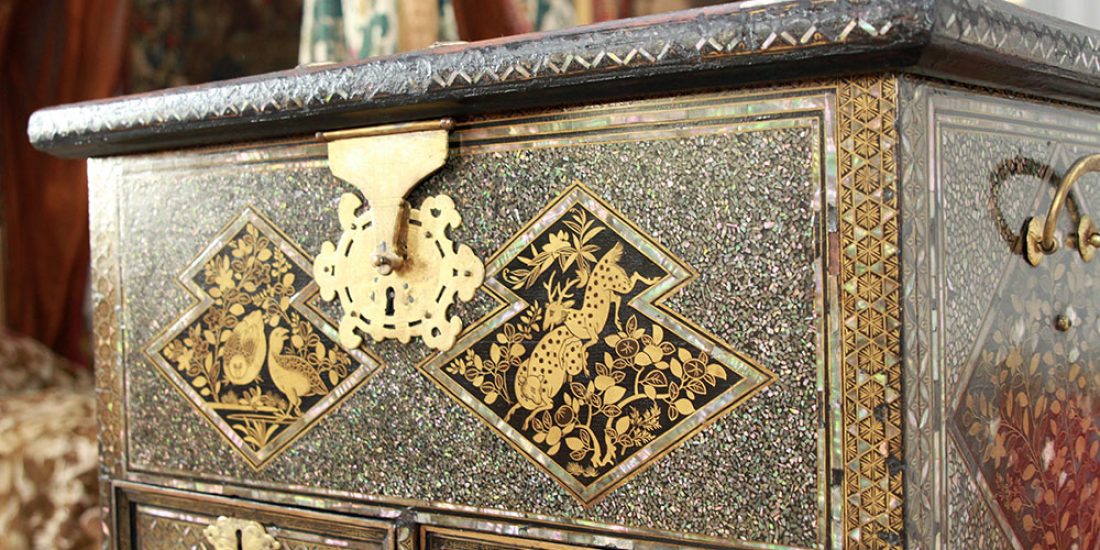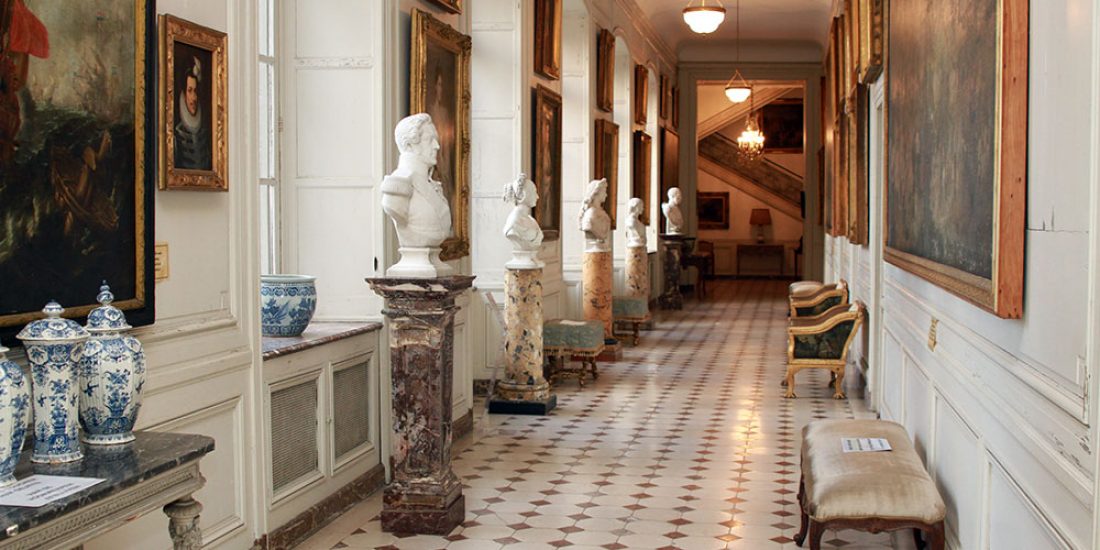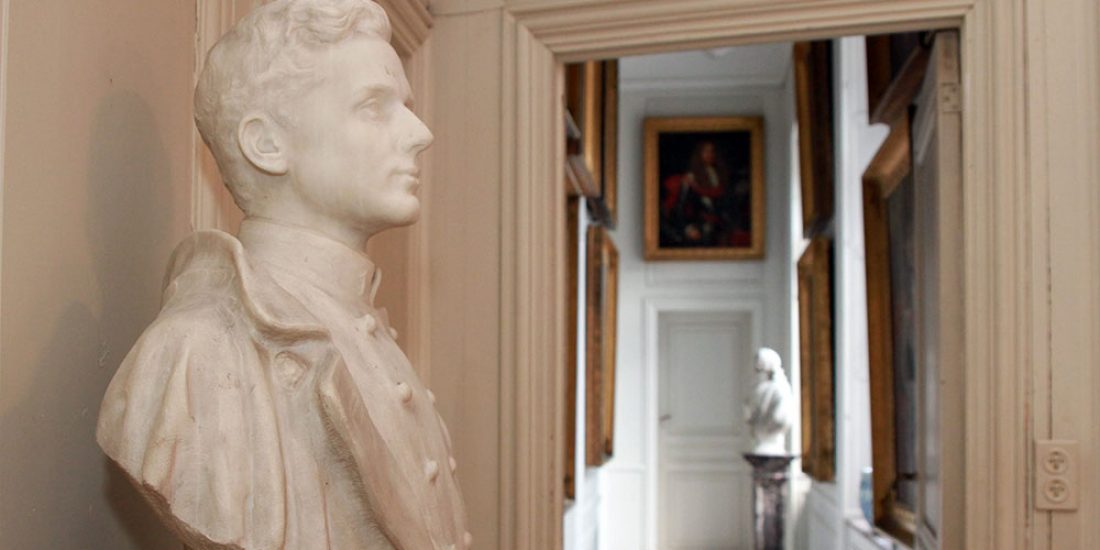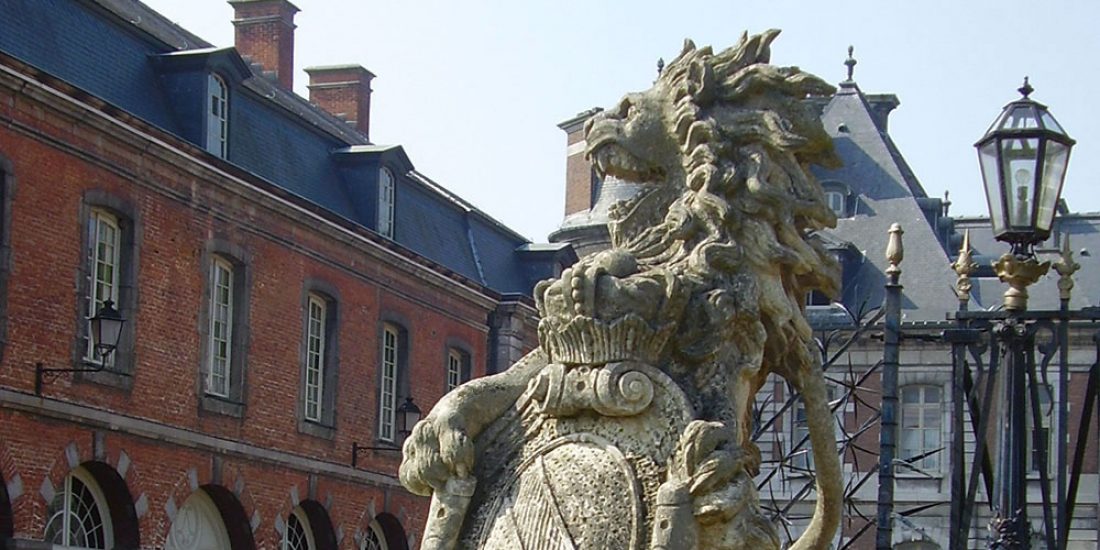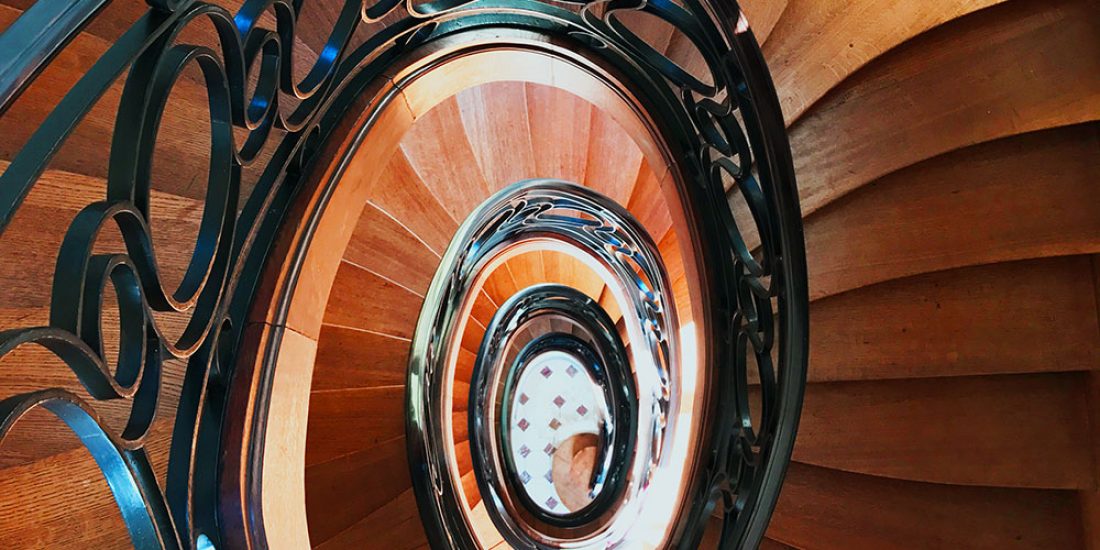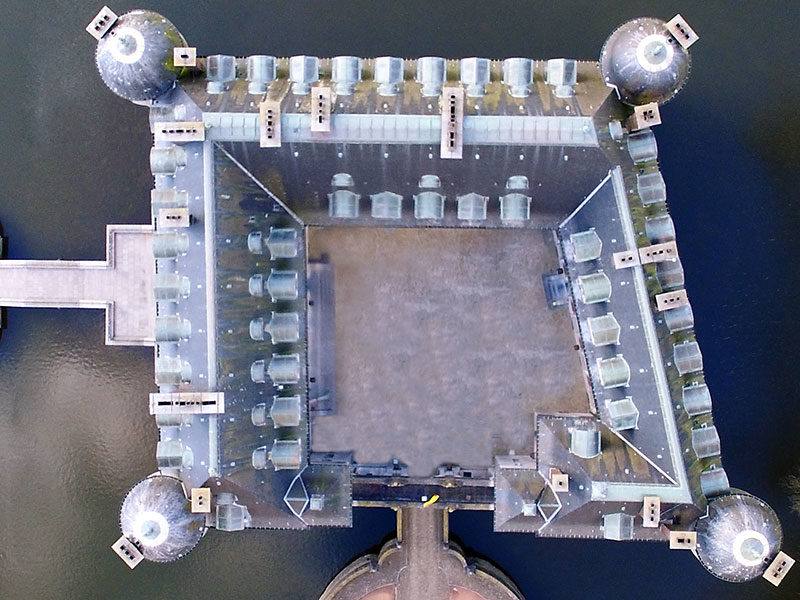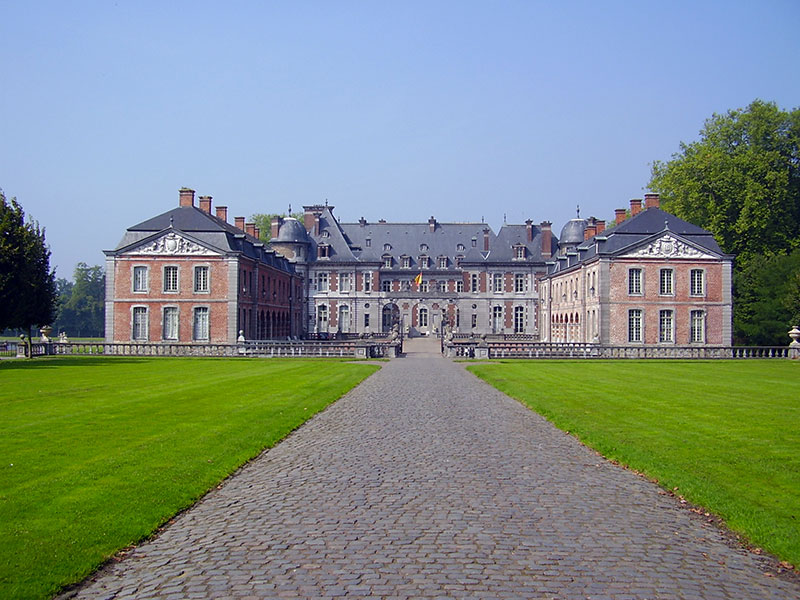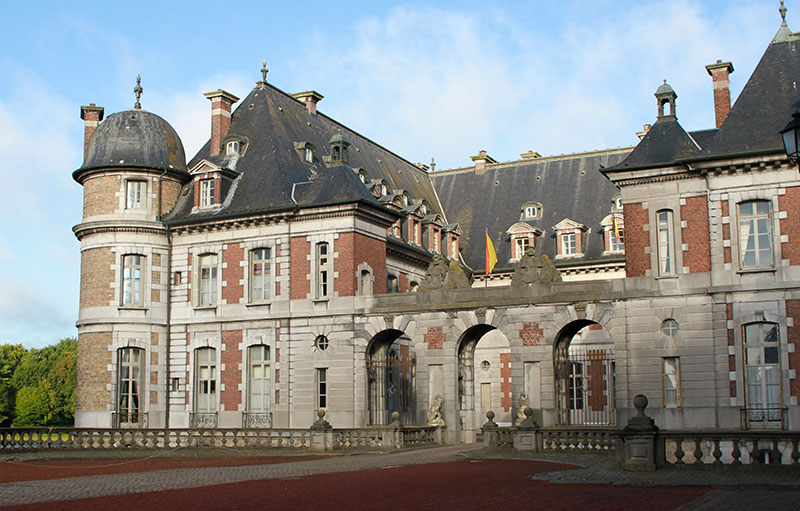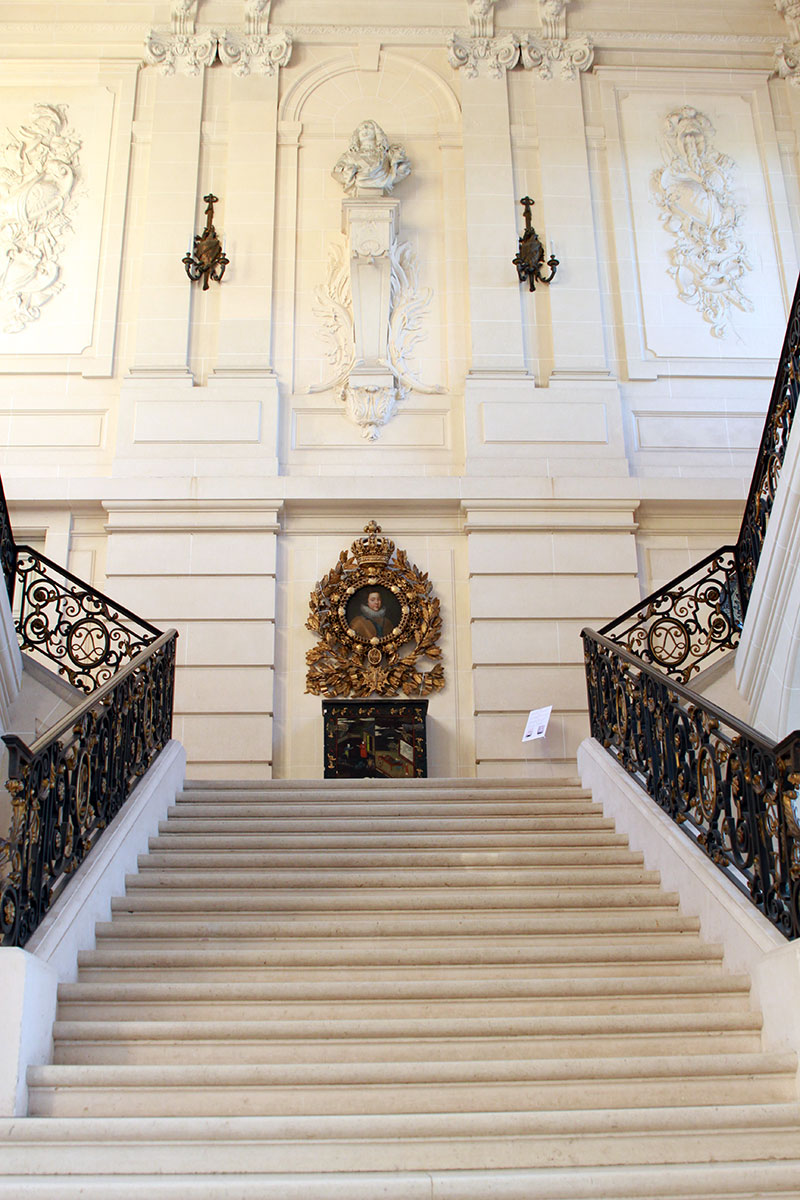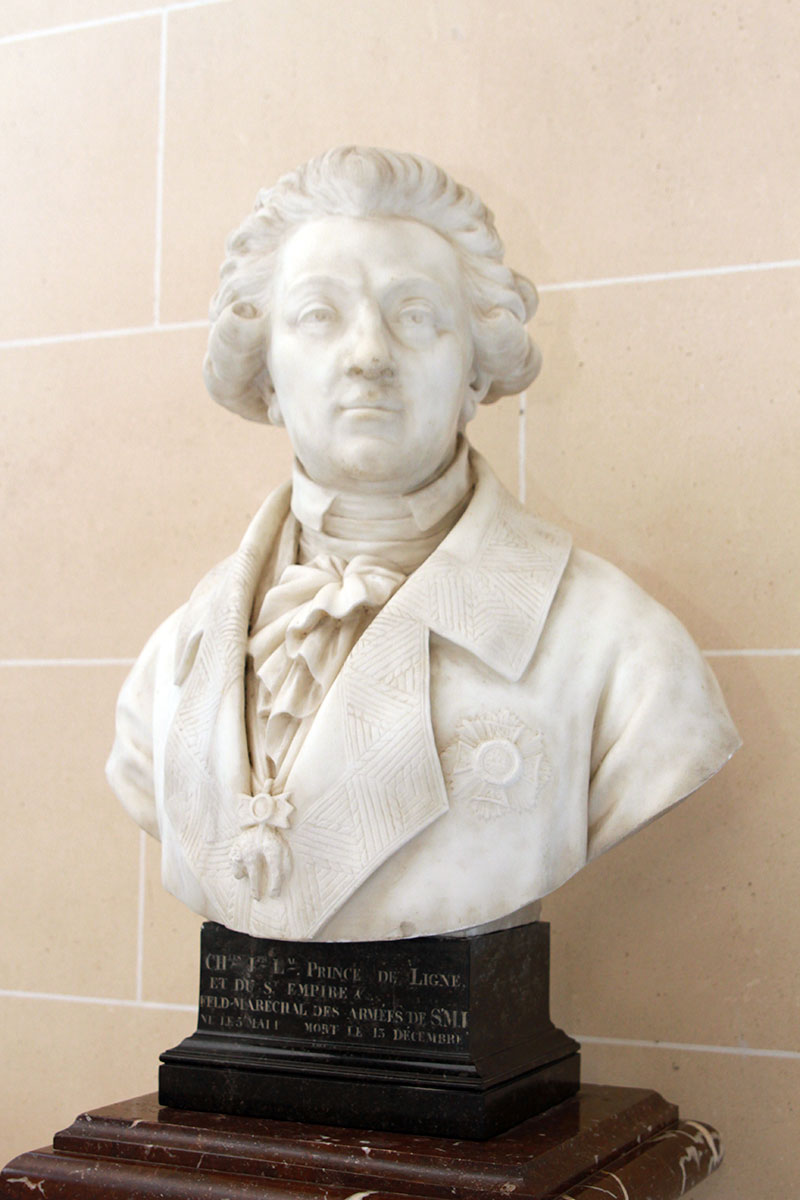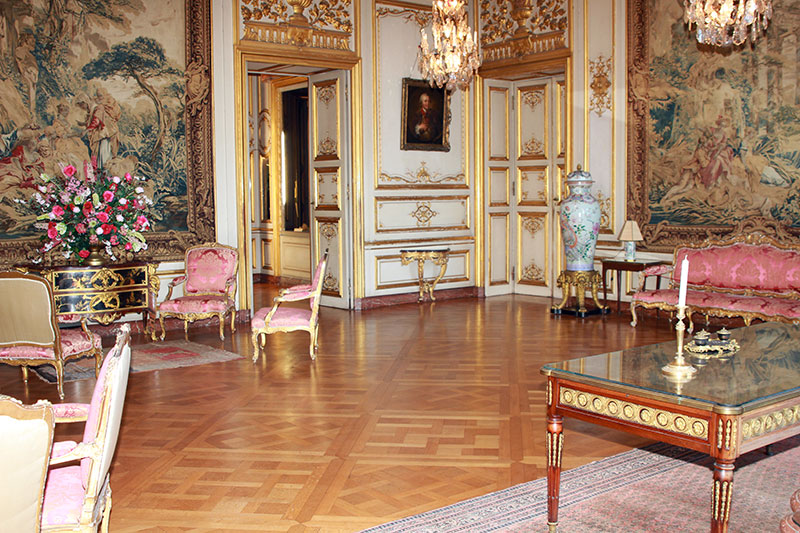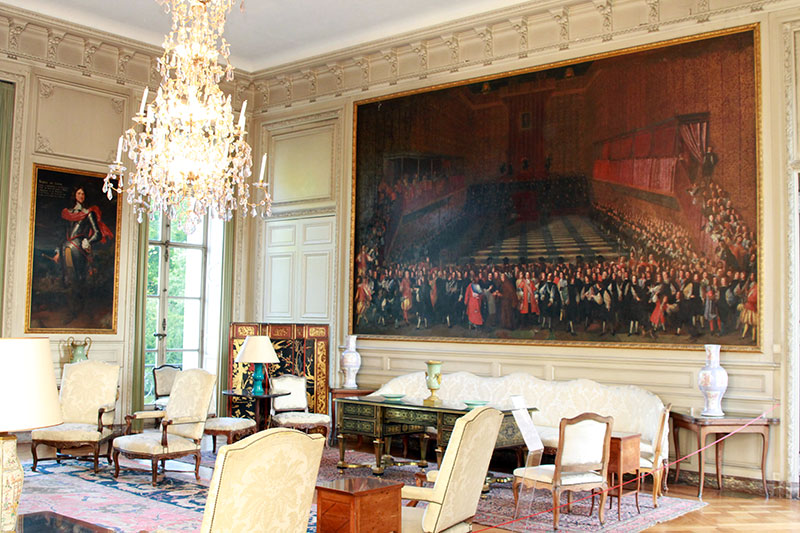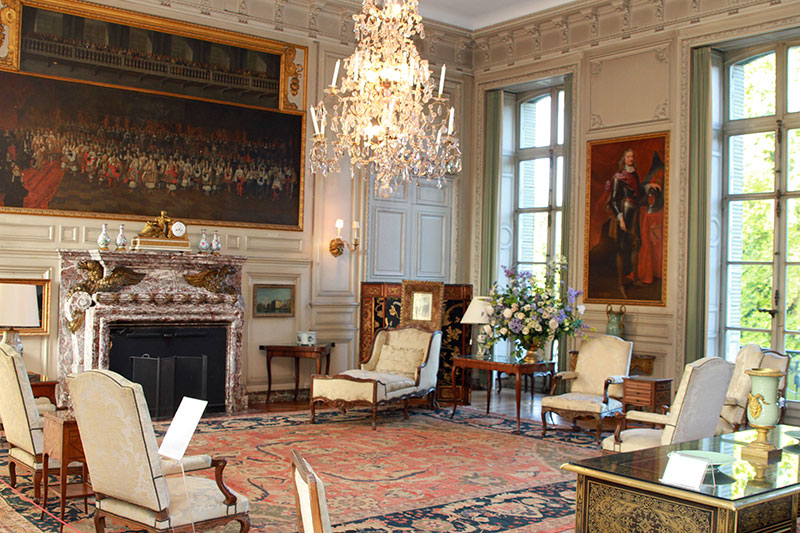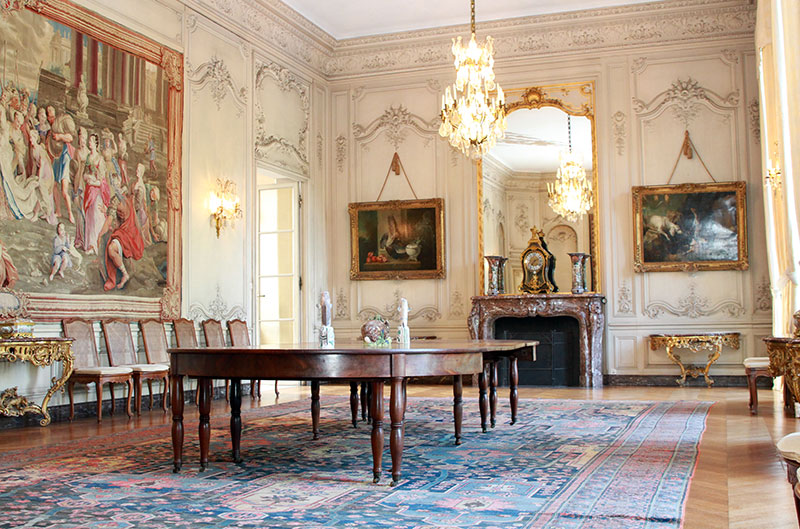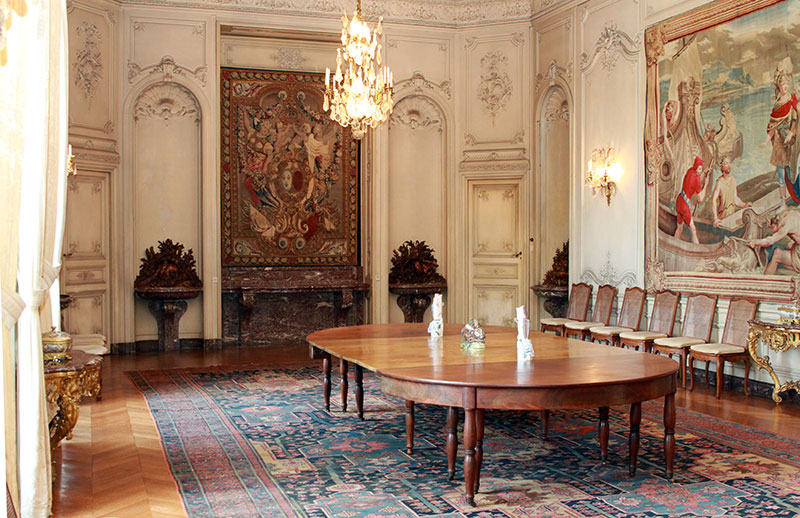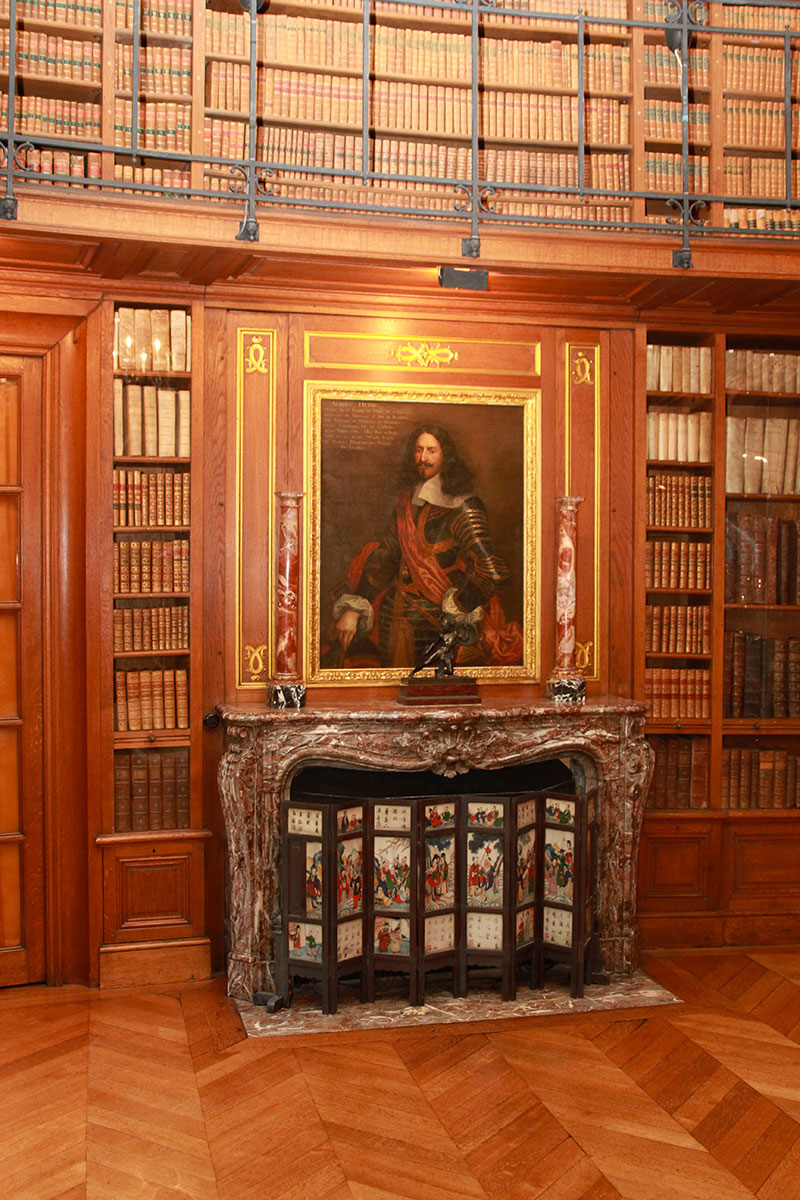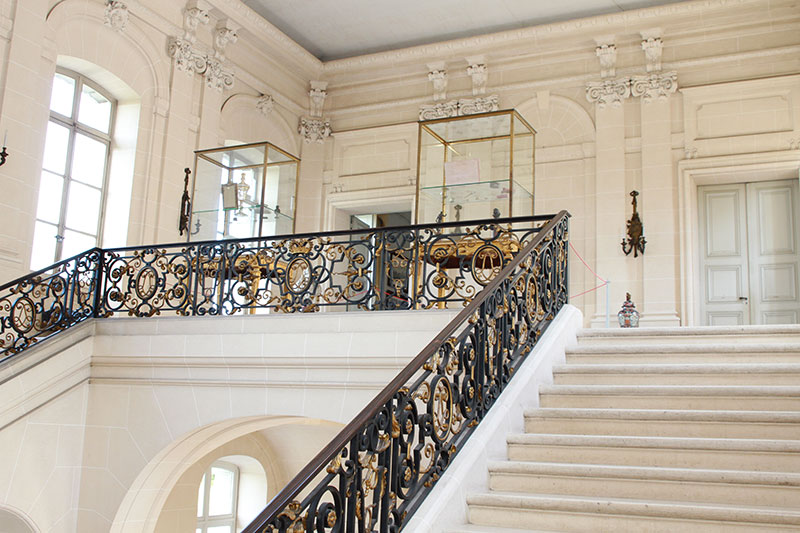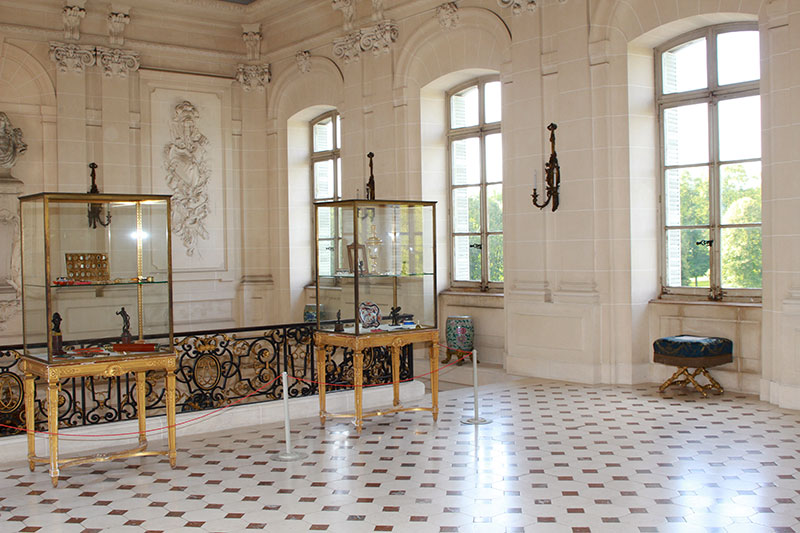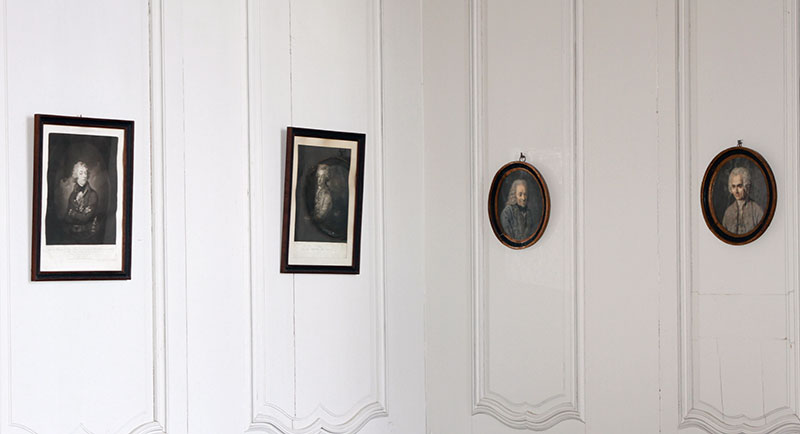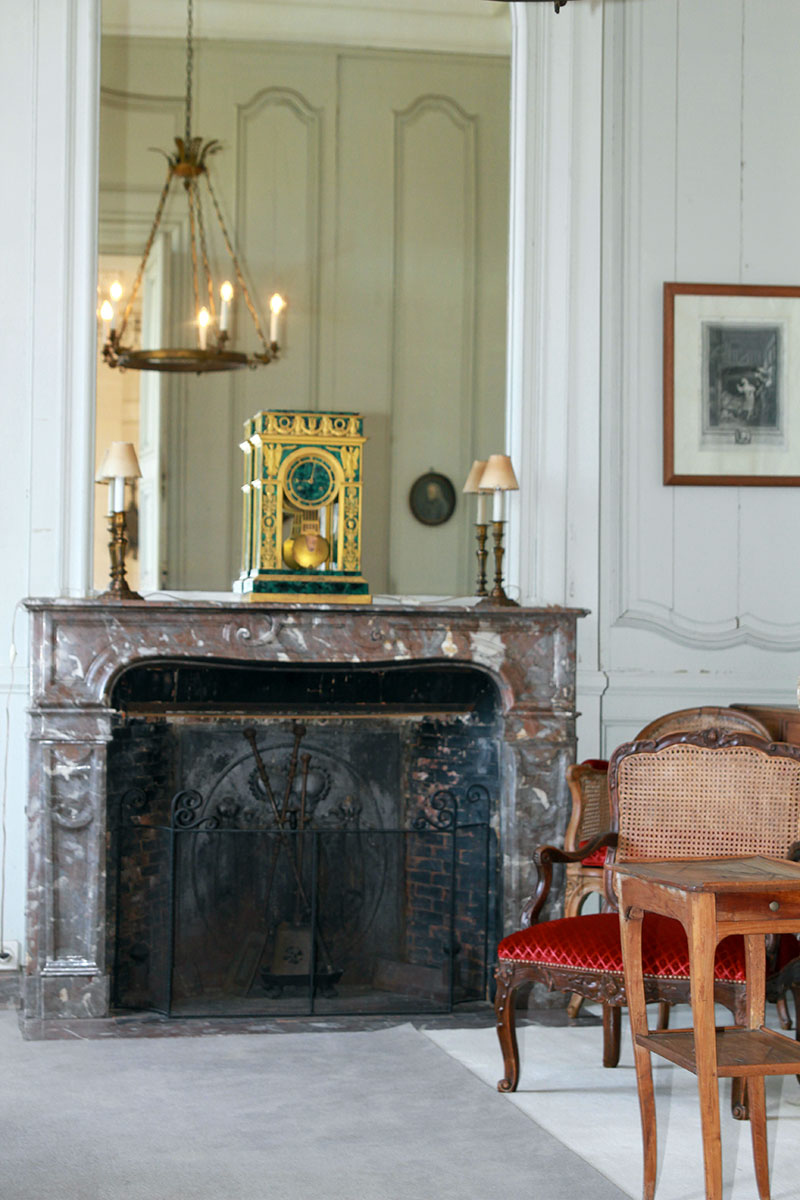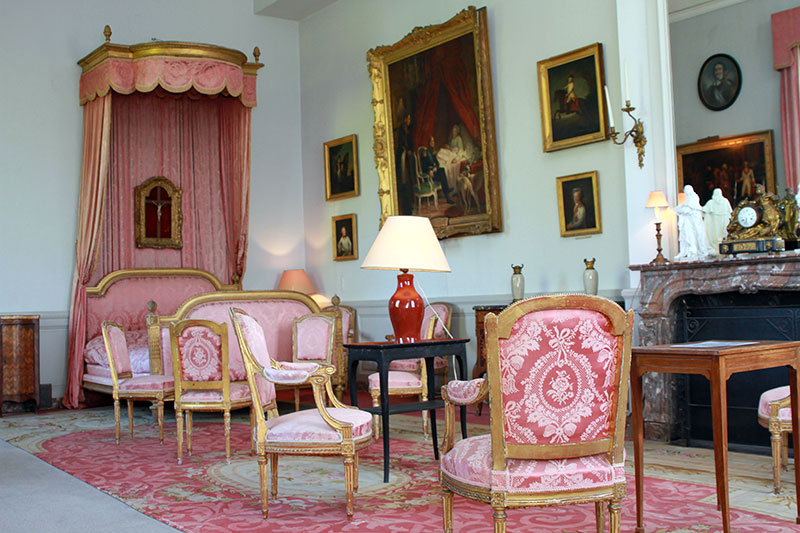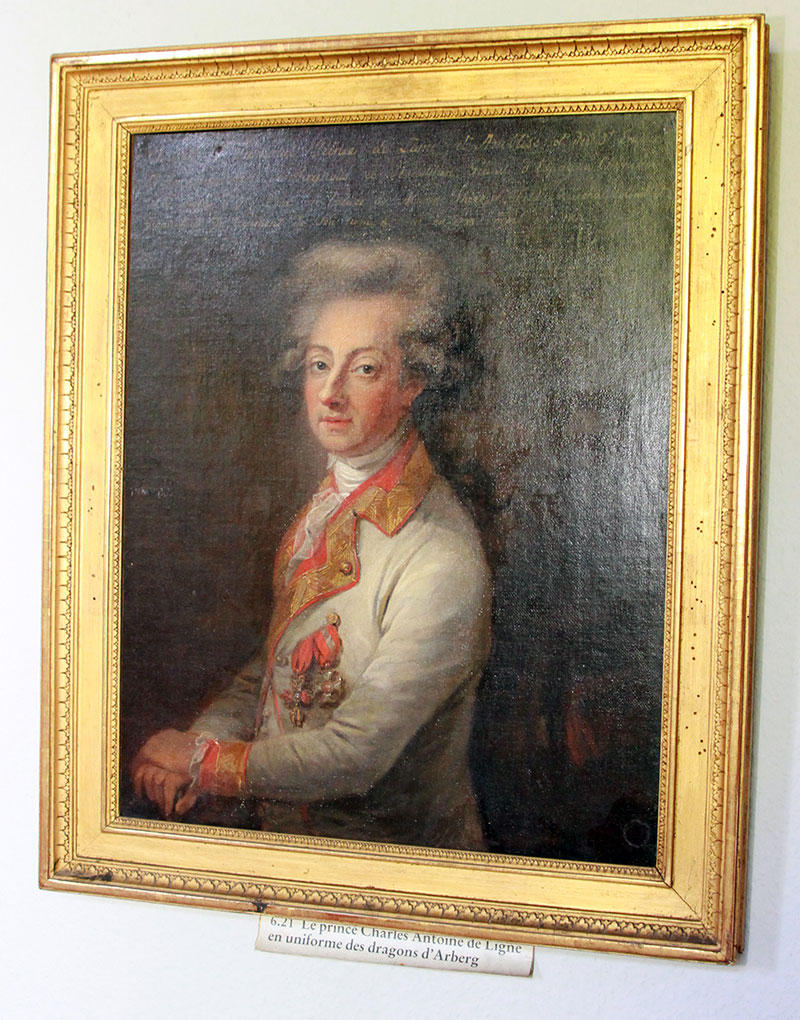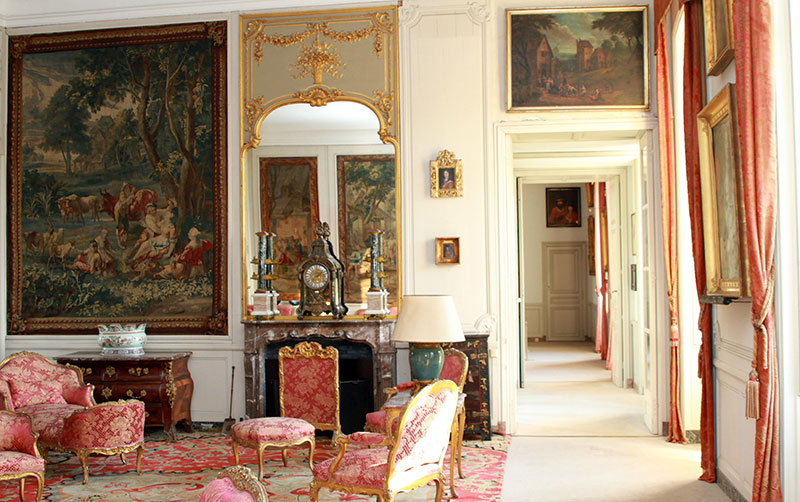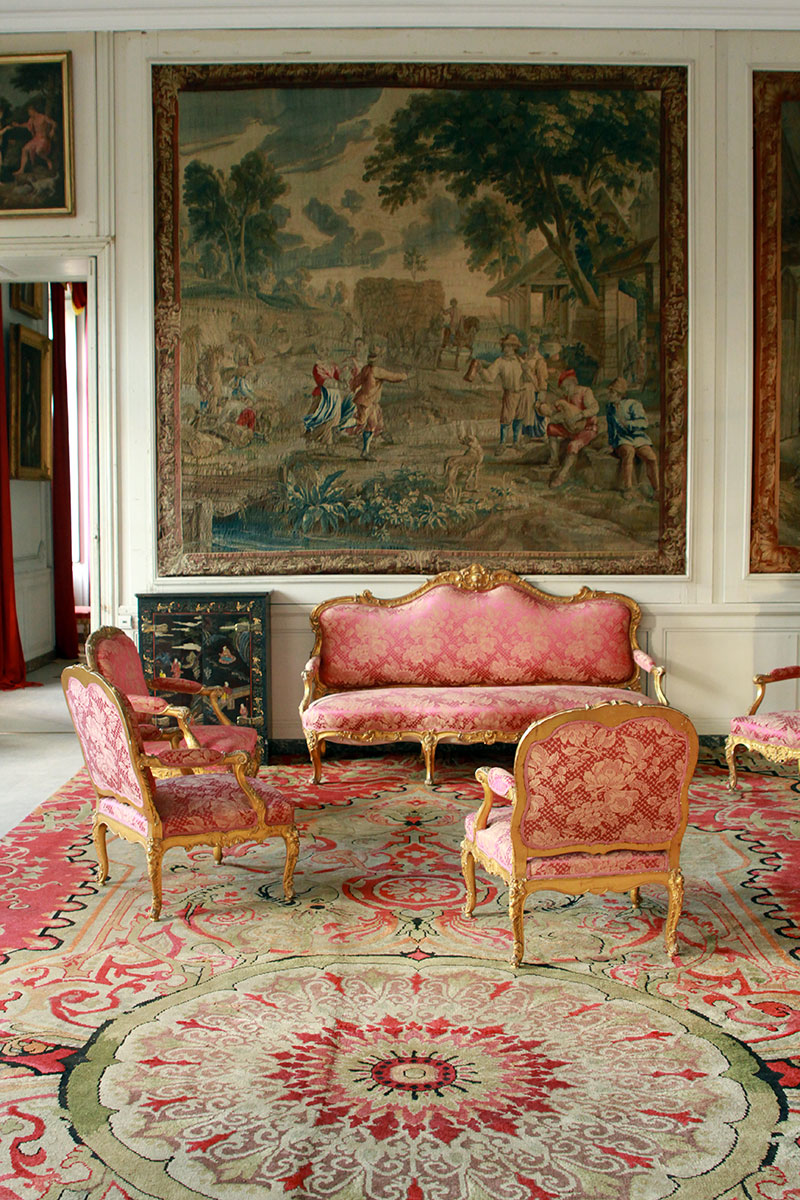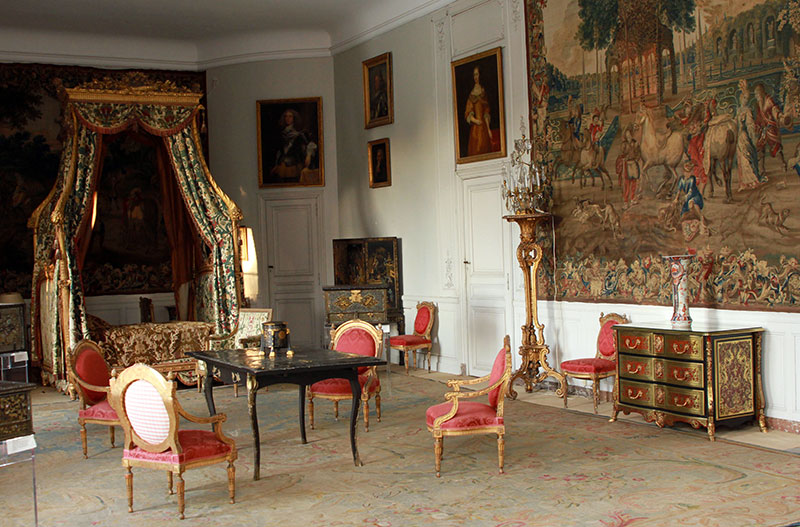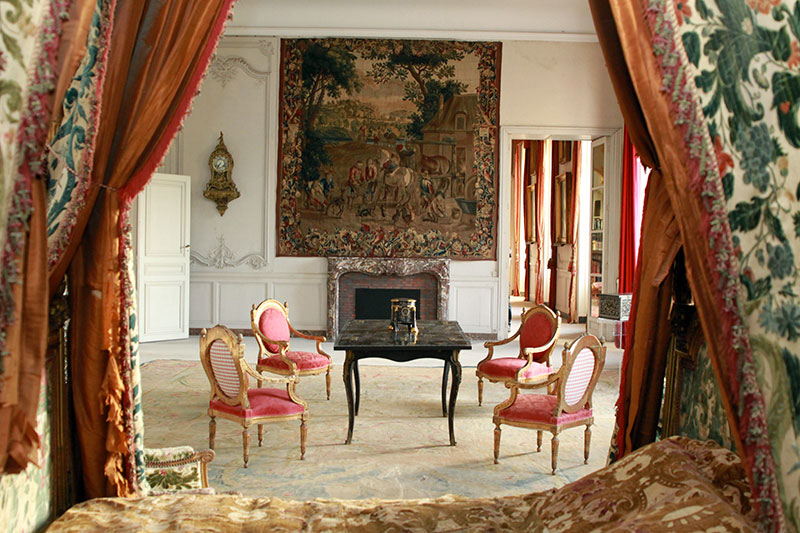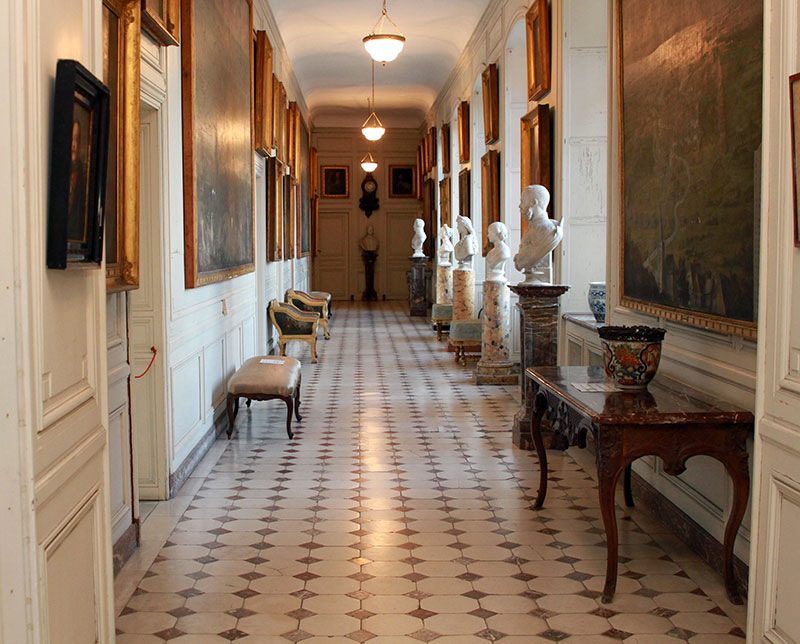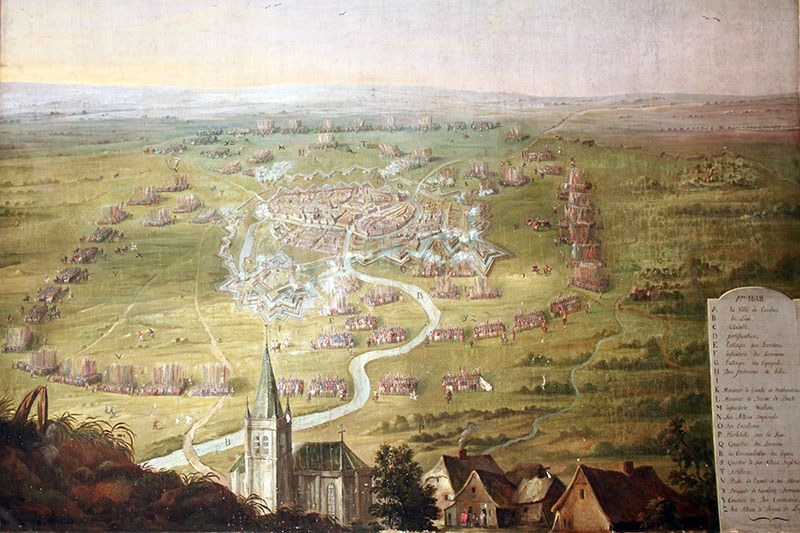Visiting the Castle
Hall d’entrée
La visite du château commence par le vestibule.
Les deux bustes en marbre blanc sont : l’un Charles-Joseph, prince de Ligne, dû au ciseau de Godecharle, sculpteur belge (1750-1835), l’autre la Grande Catherine de Russie, par Delvaux (1695-1778).
Le grand tableau qui s’y trouve représente le roi Charles Ier d’Angleterre et son épouse Henriette de France, par Mytens, élève de Van Dyck (1590-1656).
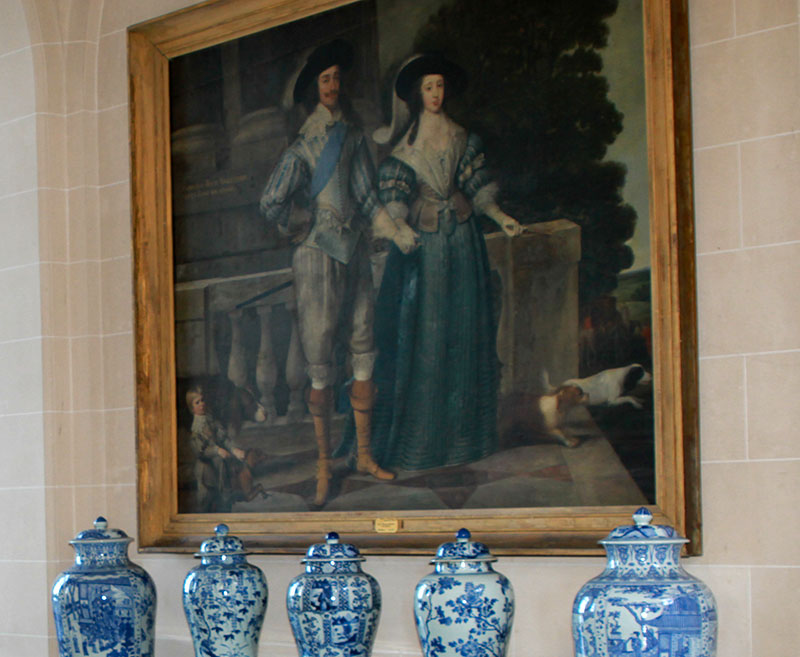
Le Salon des Maréchaux
De chaque côté de la cheminée, des tableaux de Jean-Baptiste Leprince (1733-1751) montrent des scènes de la vie en Russie, à l’époque du voyage que fit le prince Charles- Joseph lorsqu’il accompagna Catherine II en Crimée en 1787.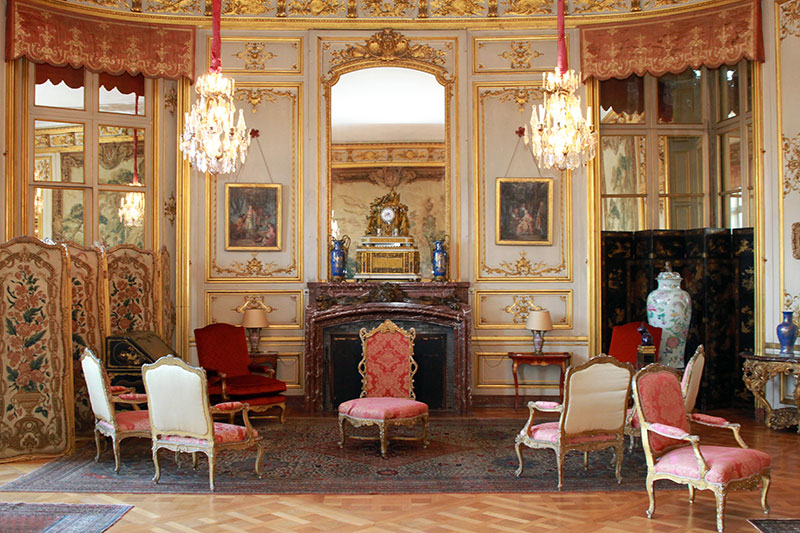
Dans le salon des Maréchaux, les deux tapisseries de Beauvais d’après des cartons de Boucher (1736), représentent « La pêche à la ligne » et « La diseuse de bonne aventure ».
Le salon des Ambassadeurs
Dans le salon des Ambassadeurs trois grands tableaux rappellent les étapes marquantes de la vie du prince Claude-Lamoral Ier de Ligne :
Son arrivée à Londres en 1660, chargé par le roi d’Espagne Philippe IV, de féliciter Charles II de son rétablissement sur le trône d’Angleterre.
Au-dessus de la cheminée, un moment de l’audience, dans la salle des banquets de Guildhall. Vis-à-vis, l’ouverture du Parlement de Palerme est présidée par le même prince de Ligne, en qualité de vice-roi de Sicile. Le bureau et les quatre tables sont dans le style de l’ébéniste François Boulle.
La Salle à manger
De part et d’autre de la cheminée en marbre de Rance (Belgique), deux natures mortes de J.B. Oudry font face à une tapisserie des Gobelins, dite « Portière aux Renommées », aux armes de France et de Navarre.
La grande tapisserie aux armes du Cardinal de Rohan-Soubise, elle aussi de la manufacture des Gobelins, représente l’enlèvement d’Hélène de Troie. Entre les fenêtres on peut admirer un pastel représentant Mademoiselle H. Gaussin.
Quarante convives peuvent aisément prendre place autour de la table, dans sa plus grande longueur.
La Bibliothèque
La bibliothèque de Beloeil abrite plus de 20.000 ouvrages et de précieux manuscrits dont certains sont rarissimes, comme le « Liber passionis » aux armes d’Henri VII d’ Angleterre. Un portrait d’Albert-Henri, deuxième prince de Ligne (1609-1641), rappelle que cet homme d’étude fut le créateur de cet ensemble unique.
La renommée de la bibliothèque porte tant sur l’intérêt des livres que sur la qualité des reliures, signées par les plus grands maîtres en la matière. Contigüe à la bibliothèque, une petite pièce contient les livres, reliés en rose, du feld-maréchal Charles-Joseph de Ligne et plus de 3.500 lettres autographes, correspondance précieuse échangée par les souverains et hommes célèbres avec les princes de Ligne.
Le pallier du 1er étage
Les deux vitrines contiennent des objets personnels du prince Charles-Joseph de Ligne (1735-1814). Ce lieu possède la plus belle vue sur les Jardins à la française.
L’antichambre
Au mur, une panoplie d’armes ayant appartenu au prince Charles-Joseph de Ligne et à son fils, avec les blasons de l’armée autrichienne. Sur la cheminée, un cartel décoré de malachite et de bronze doré (XIXe siècle).
L’appartement du Feld-Maréchal
Deux chambres du château contiennent des souvenirs du Feld-Maréchal, prince Charles-Joseph de Ligne (1735-1814), le plus célèbre écrivain belge du XVIIIe siècle. Sa boucle d’oreille, des plumes dont il se servit pour écrire ses « Mémoires », sont exposés sur le palier du premier étage.
La chambre d’Epinoy
Dans la chambre d’Epinoy, qui rappelle un des titres de l’aîné de la Maison de Ligne, un mobilier Régence accompagne le lit, en forme de bateau qui, d’après la tradition, aurait servi à nombre de personnages célèbres qui séjournèrent à Beloeil.
Sur les murs, des tapisseries de Bruxelles à large bordure, d’après Teniers (XVIIe siècle) représentent « La Plantation de l’arbre de Mai » et des sujets champêtres. Sur la commode Régence dite « en tombeau », se trouve un rafraîchissoir en porcelaine de Chine.
La chambre d’Amblise
Dans la chambre d’Amblise nommée selon un titre princier que porte l’aîné des Ligne, un somptueux lit à baldaquin, en bois sculpté et doré, garni de velours de Gênes ancien, et dont le dais est supporté par quatre têtes d’aigle, est à rapprocher du mobilier exécuté par Jacob pour la reine Marie-Antoinette.
On remarque dans cette pièce un mobilier composé d’un canapé, de six fauteuils et de six chaises, tous à « pomme de pin », une bergère estampillée G. Jacob, et des scribans en laque de Chine du XVIIIe siècle. Trois grandes tapisseries de Lille, du XVIIe siècle, ornent les murs.







